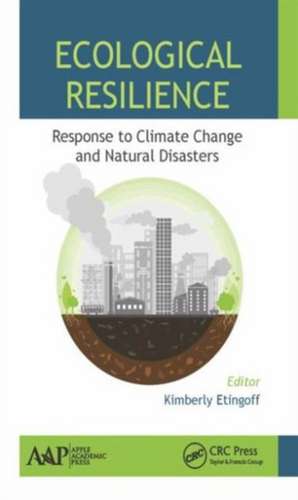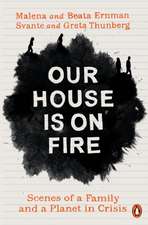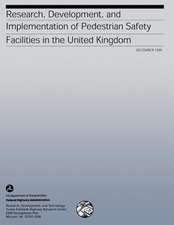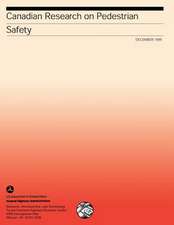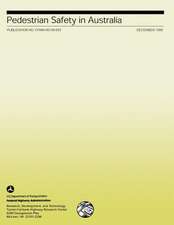Ecological Resilience: Response to Climate Change and Natural Disasters
Editat de Kimberly Etingoffen Limba Engleză Hardback – 6 apr 2016
This book presents the latest research on resilience strategies around the world. Research such as this is necessary to create new ideas and to evaluate established ones in an effort to make communities more adaptable and to increase people's survival and quality of life while living with the reality of climate change. The book offers definitions of resilience and various ways of measuring it, since resilience is still a concept in transition. It also describes general strategies for increasing communities’ resilience at multiple levels, then dives into specific dimensions of resilience, tying it to energy infrastructure and systems and public health.
| Toate formatele și edițiile | Preț | Express |
|---|---|---|
| Paperback (1) | 579.62 lei 6-8 săpt. | |
| Apple Academic Press Inc. – 31 mar 2021 | 579.62 lei 6-8 săpt. | |
| Hardback (1) | 924.91 lei 6-8 săpt. | |
| Apple Academic Press Inc. – 6 apr 2016 | 924.91 lei 6-8 săpt. |
Preț: 924.91 lei
Preț vechi: 1127.94 lei
-18% Nou
Puncte Express: 1387
Preț estimativ în valută:
177.00€ • 192.20$ • 148.68£
177.00€ • 192.20$ • 148.68£
Carte tipărită la comandă
Livrare economică 22 aprilie-06 mai
Preluare comenzi: 021 569.72.76
Specificații
ISBN-13: 9781771883108
ISBN-10: 1771883103
Pagini: 366
Ilustrații: 46
Dimensiuni: 152 x 229 x 25 mm
Greutate: 0.64 kg
Ediția:1
Editura: Apple Academic Press Inc.
Colecția Apple Academic Press
ISBN-10: 1771883103
Pagini: 366
Ilustrații: 46
Dimensiuni: 152 x 229 x 25 mm
Greutate: 0.64 kg
Ediția:1
Editura: Apple Academic Press Inc.
Colecția Apple Academic Press
Public țintă
Academic and PostgraduateCuprins
Introduction. Defining and Measuring Resilience. Understanding Resilient Urban Futures: A Systemic Modelling Approach. Towards Sustainable Cities: Extending Resilience with Insights from Vulnerability and Transition Theory. Resilience Attributes of Social-Ecological Systems: Framing Metrics for Management. General Resilience Strategies. Community Vitality: The Role of Community-Level Resilience Adaptation and Innovation in Sustainable Development. Cross-Scale and Cross-Level Dynamics: Governance and Capacity for Resilience in a Social-Ecological System in Taiwan. Towards Enhanced Resilience in City Design: A Proposition. Considering Hazard Estimation Uncertain in Urban Resilience Strategies. Energy Resilience. Resilience, Sustainability and Risk Management: A Focus on Energy. Public Health Resilience. Resilience to the Health Risks of Extreme Weather Events in a Changing Climate in the United States. Building Resilience against Climate Effects: A Novel Framework to Facilitate Climate Readiness in Public Health Agencies. The Los Angeles County Community Disaster Resilience Project: A Community-Level, Public Health Initiative to Build Community Disaster Resilience. Index.
Descriere
This title includes a number of Open Access chapters.
This book presents the latest research on resilience strategies around the world. Research such as this is necessary to create new ideas and to evaluate established ones in an effort to make communities more adaptable and to increase people's survival and quality of life while living with the reality of climate change. The book offers definitions of resilience and various ways of measuring it, since resilience is still a concept in transition. It also describes general strategies for increasing communities’ resilience at multiple levels, then dives into specific dimensions of resilience, tying it to energy infrastructure and systems and public health.
This book presents the latest research on resilience strategies around the world. Research such as this is necessary to create new ideas and to evaluate established ones in an effort to make communities more adaptable and to increase people's survival and quality of life while living with the reality of climate change. The book offers definitions of resilience and various ways of measuring it, since resilience is still a concept in transition. It also describes general strategies for increasing communities’ resilience at multiple levels, then dives into specific dimensions of resilience, tying it to energy infrastructure and systems and public health.
